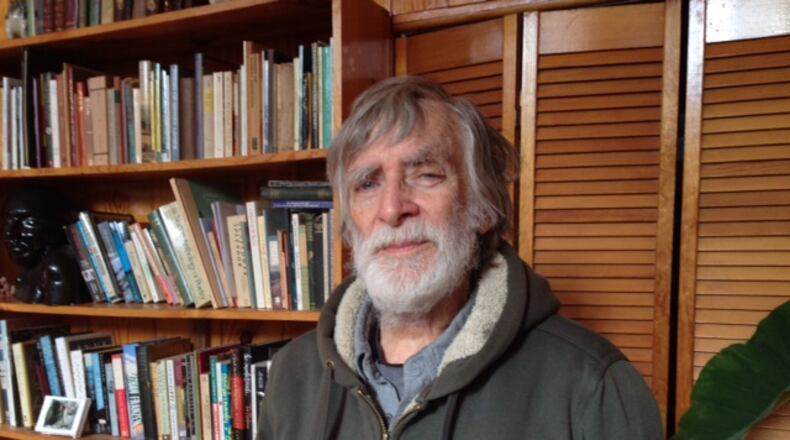For the Second Week of Early Winter
Moon Time: On December 18, the Bedding Plant Moon is new at 1:30 a.m. and at apogee (when it is farthest from Earth). Rising in the early morning and setting in the evening, this moon travels overhead in late morning to midday.
Sun Time: Winter solstice occurs at 11:28 a.m. on December 21. The Sun enters the Deep Winter constellation of Capricorn on the same day.
Planet Time: Mars and Jupiter continue to be the morning stars. Venus and Saturn are not visible.
Star Time: If you go outside an hour or so before sunrise, look up to find the Big Dipper high overhead, its winter position before dawn. Like the hands of a great clock, the Dipper's motion around the North Star tells the time of year. When it lies in the west before sunrise, daffodils bloom. With the Dipper deep along the Southern horizon in the early morning dark, lilies and roses are flowering. And when the Dipper has moved to the eastern sky, the first leaves are starting to turn for autumn.
Shooting Star Time The Ursid Meteors fall after midnight at the rate of about five to ten per hour on December 21 and 22. The young moon will favor your search for these shooting stars.
Weather Time: The December 15 Front: The coldest December days, those with better than a 35 percent chance for temperatures in the 20s or below, all come within several days of this front. The most bitter day in December weather history is the 19th, with a 30 percent chance for highs only in the teens.
The December 20 Front: New moon on December 18 may strengthen this front and increase the likelihood of snow and colder temperatures before Christmas.
Zeitgebers — Events in Nature that Tell the Time of Year: Instead of hundreds of wildflowers changing the landscape weekly, winter brings the gift of constancy. The black centers of the empty milkweed pods face the Sun, free from change, hiding nothing. Basal leaves of thistle and garlic mustard lie flat, close to the ground; they remain passive and unmoving until March. Sleek heads of ironweed, dry and soft, wait for sparrows week after week. Only one flower blossoms in the warmest years: the skunk cabbage in the swamp; it often stays in bloom all winter, long enough for almost anyone to find it.
Farm and Garden Time Be on the lookout for small whiteflies that may have come indoors on the house plants you kept outside during the summer. Whiteflies seem harmless enough in early winter, but they can get out of hand by February and destroy otherwise healthy plants. Also look for the tiny spidermites with a magnifying glass when leaves begin to become discolored or diseased. Scale insects (looking a little like elongated bumps on plant leaves and stems) may have taken over your spider plants during the late summer. If you see them on one plant, they may be on others.
Marketing Time: The Christmas tree harvest is almost over, but the peak of tree sales begins this week. Crafts, Christmas cookies, fruitcake, wreathes and dried flower bouquets are still popular at the farmers' markets and roadside stands.
Mind and Body Time: When the barometer falls in advance of the Christmas cold front and the New Year's cold front, your emotions could also take a tumble.. And arthritis, sinusitis and old surgical sites may also cause you problems until those weather systems pass through.
Creature Time (for fishing, hunting, feeding, bird watching): As the barometer falls in advance of the December 20 and December 25 cold fronts, fishing and hunting should improve, especially during the late morning hours when the moon is overhead. Increase the amount of seed and suet available for birds as the weather worsens. The birds not only provide entertainment and company, they often stay throughout the year eating insects. Some people put out decorative seed wreaths for the holidays. Squirrels, partial to dried Indian corn, enjoy playing on spinning devices that make them work for their treats.
Journal
At first, I saw just a small group of crows in a soybean field not far from Springfield-Xenia Road. Then an hour later as I drove along Upper Valley Pike, I came onto a great murder of crows flying overhead, its source lost in the southwest, its destination stretching into the southeast.
Then north through the county: Crows in the cornfields, in the trees and flying back and forth over the stores. There seems to be nothing unique that brings them to this urban setting, no unusual food supply or cover. Their convention must go back in history for hundreds or thousands of years. It always excites me to see them here. They reassure me that the world is still turning the way it should, in spite of pollution and climate fluctuations and the environmental pressure from increasing population.
Poor Will’s Almanack for 2018 is now available. Order yours from Amazon, or, for an autographed copy, order from www.poorwillsalmanack.com. You can also purchase Bill Felker’s new book of essays, Home is the Prime Meridian, from those sites.
About the Author
